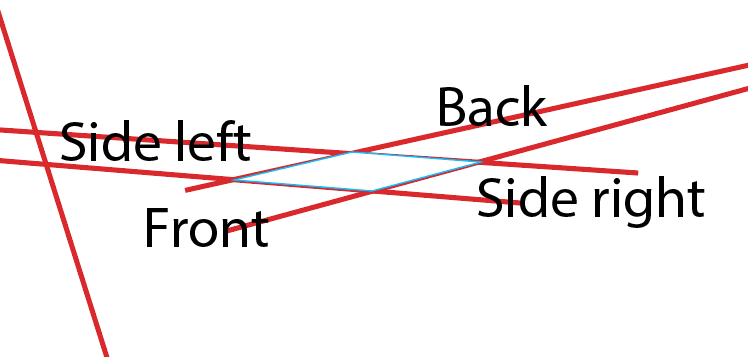The blue object is a very simple rectangle in two point perspective. Next I zoom in on it:
Next I zoom in on it:  When I measure the sides, I see is that the back side is shorter than the front side. It is foreshortened. The right side is closer to viewer than the left side. I would think the left side should be shorter because it is farther from the viewer. But it doesn't work. The left side is longer. So the farther side is not foreshortened. Isn't this a contradiction?
When I measure the sides, I see is that the back side is shorter than the front side. It is foreshortened. The right side is closer to viewer than the left side. I would think the left side should be shorter because it is farther from the viewer. But it doesn't work. The left side is longer. So the farther side is not foreshortened. Isn't this a contradiction?
Where is my logic wrong?


